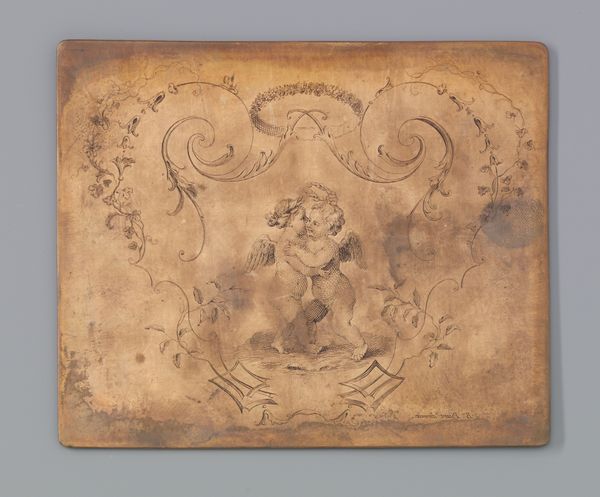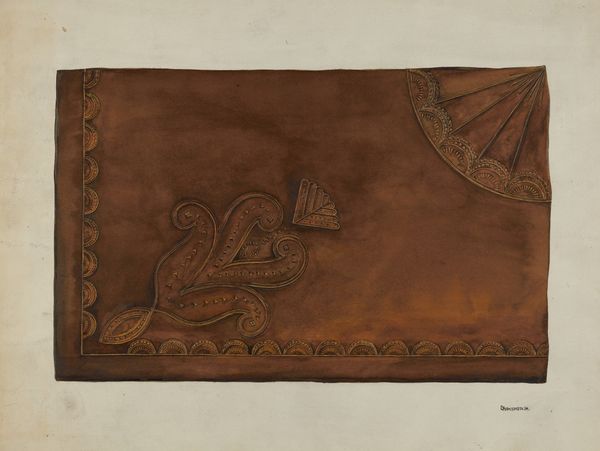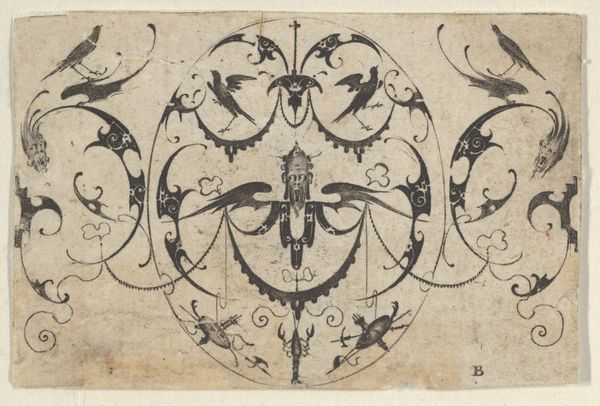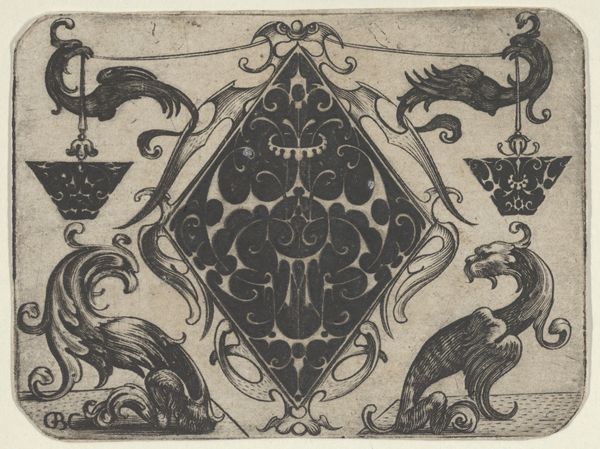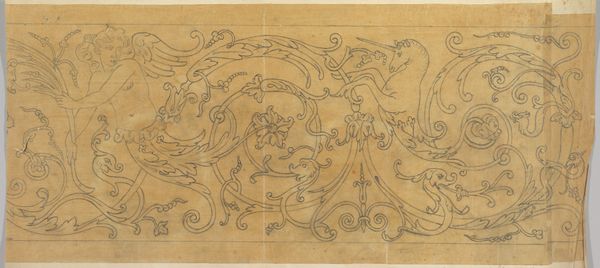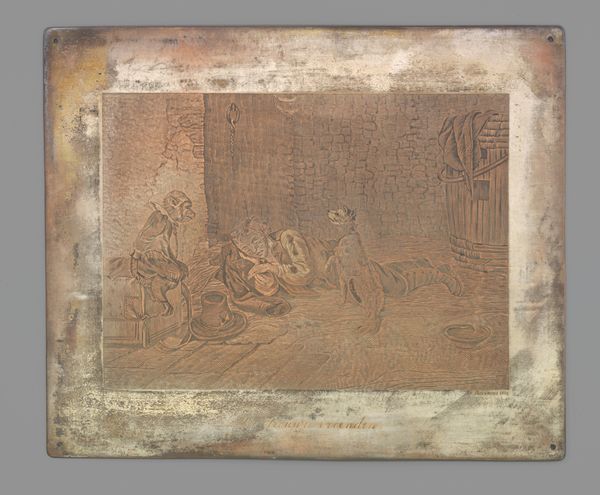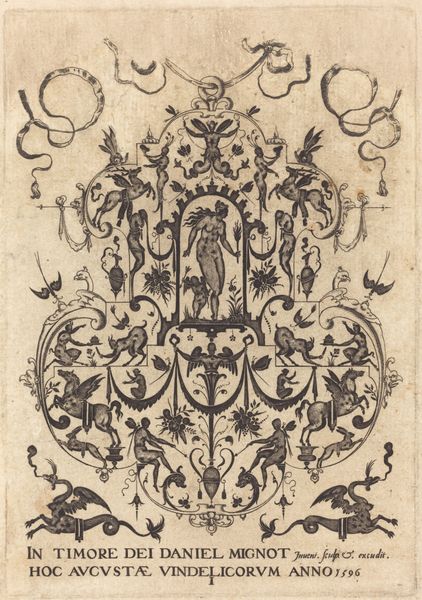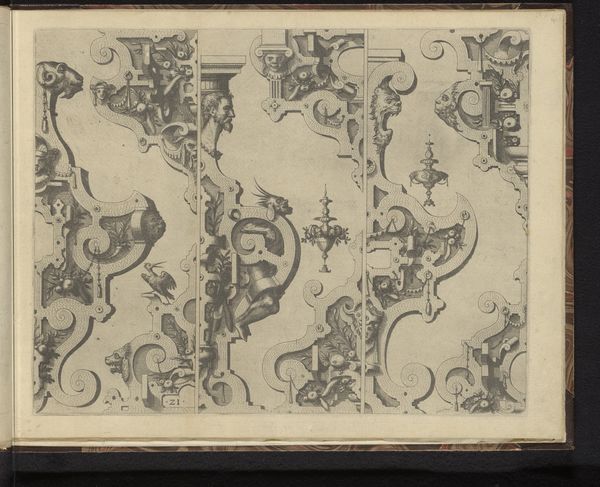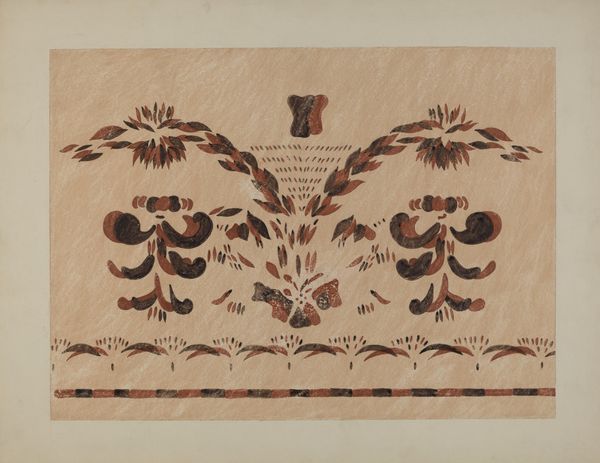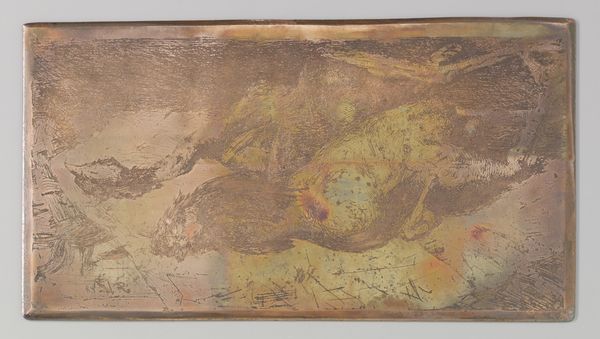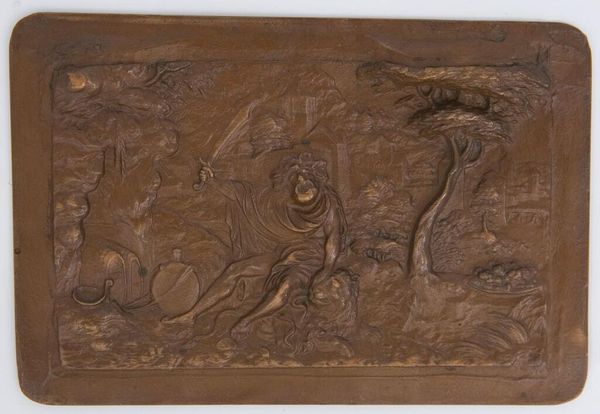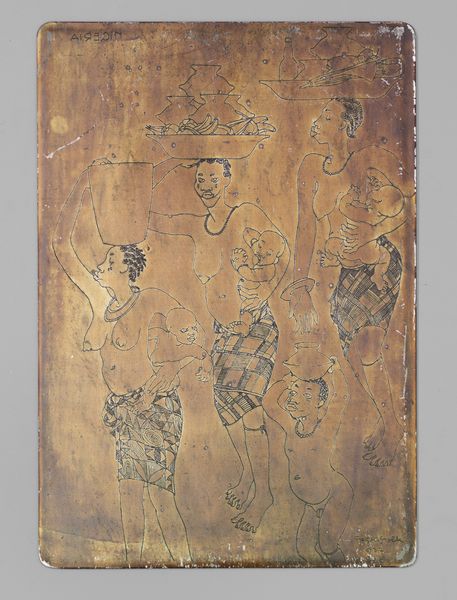
drawing, ornament, print, engraving
#
drawing
#
ornament
#
baroque
# print
#
figuration
#
coloured pencil
#
underpainting
#
line
#
history-painting
#
engraving
Dimensions: height 66 mm, width 121 mm
Copyright: Rijks Museum: Open Domain
Bernard Picart created this ornament with two fasces sometime between 1673 and 1733. The composition is dominated by the stark contrast of engraved lines against the plate. The symmetrical arrangement of the fasces, framed by ornate scrolls, draws our eye into a play of power and elegance. The fasces—bundles of rods bound around an axe—were ancient Roman symbols of authority. Here, Picart presents them within a decorative framework, seemingly domesticating their potent symbolism. This juxtaposition invites us to question how symbols of power are appropriated and recontextualized within different cultural milieus. Are they mere decoration, or do they still resonate with their original force? Consider how the very act of engraving—a meticulous and controlled process—mirrors the control and order symbolized by the fasces themselves. The linear precision of the engraving lends a certain rigidity, yet the fluid scrolls that encase the fasces introduce an element of baroque dynamism. The artwork is not just an aesthetic object but an invitation to explore how meaning is constructed and negotiated through visual representation.
Comments
No comments
Be the first to comment and join the conversation on the ultimate creative platform.
